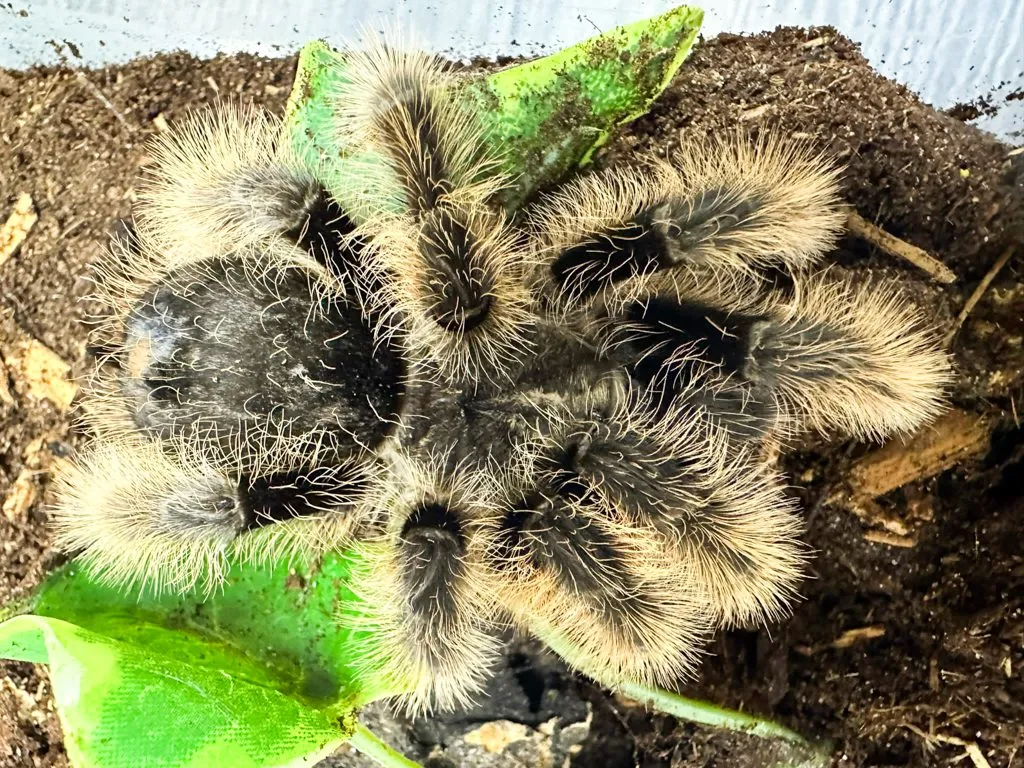What is a Curly Hair Tarantula?
The Curly Hair Tarantula (Tliltocatl albopilosus), is a popular and captivating species for both beginner and experienced tarantula enthusiasts. Native to the tropical dry forests of Central America, particularly Costa Rica, this tarantula is known for its docile temperament and relatively low-maintenance care requirements. Its endearing name comes from the unique appearance of the setae (hairs) covering its body, which often curl, giving it a fluffy, curly appearance. This distinctive feature, combined with its calm demeanor, makes the Curly Hair Tarantula an appealing pet for many. Understanding this tarantula begins with appreciating its natural environment, behavior, and the specific needs it has to thrive in captivity. This article will delve into all these aspects, providing a comprehensive guide for anyone interested in these fascinating creatures.
Origin and Habitat
The Curly Hair Tarantula originates from the tropical dry forests of Costa Rica and other parts of Central America. These forests are characterized by a distinct dry season, which influences the tarantula’s behavior and care requirements. In its natural habitat, the Curly Hair Tarantula is a terrestrial species, meaning it spends most of its time on the ground. They typically burrow in the soil, under logs, or among the leaf litter to create a safe shelter from predators and the harsh environmental conditions. The humidity and temperature of these environments are crucial to their well-being, and understanding these elements is essential for providing proper care in a captive setting. Mimicking their natural habitat is a key factor in ensuring a healthy and thriving Curly Hair Tarantula.
Physical Characteristics of Curly Hair Tarantulas
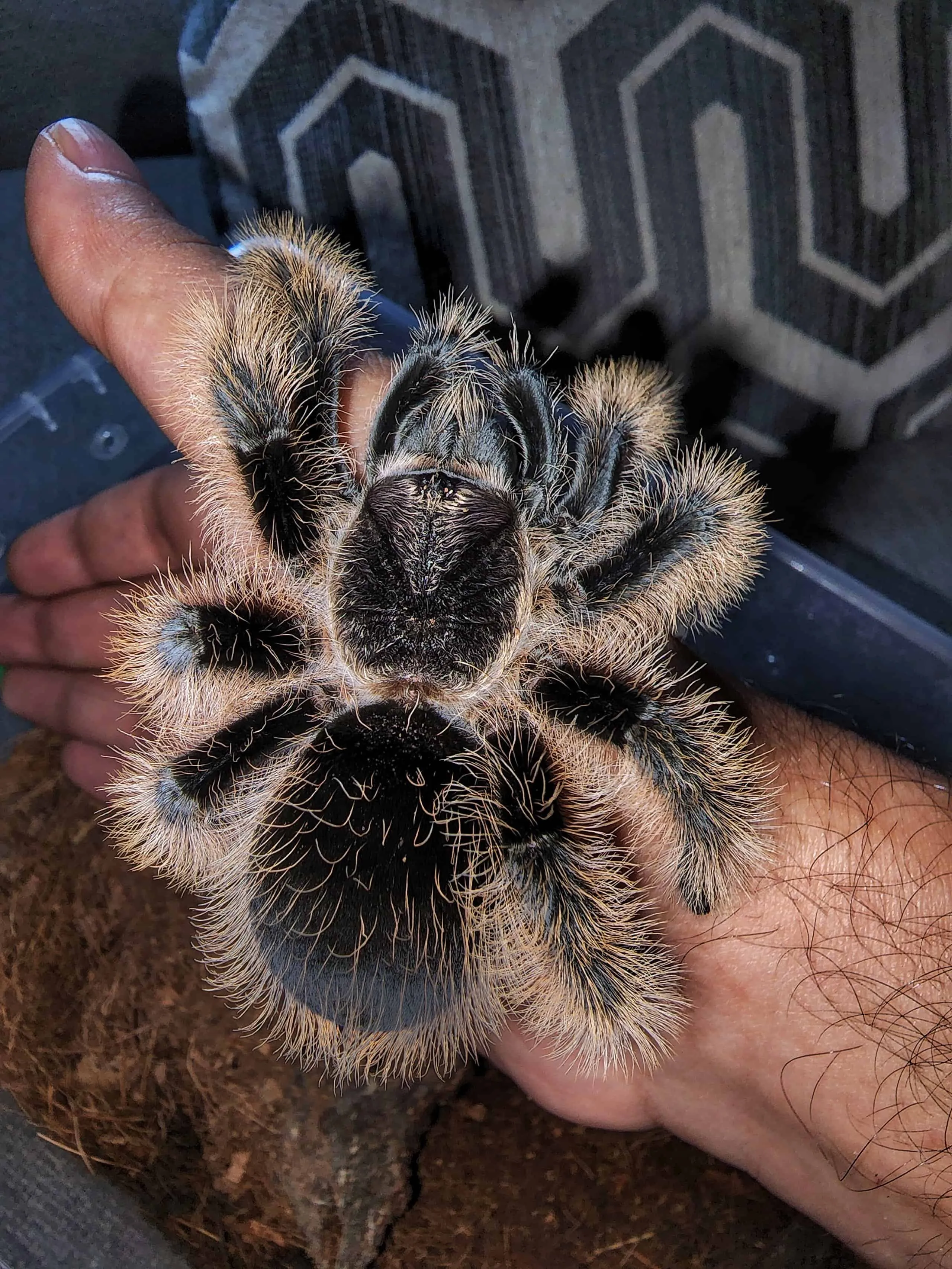
The Curly Hair Tarantula is a visually striking species, easily recognizable by its distinctive physical traits. Their appearance is a significant aspect of their appeal, contributing to their popularity as pets. From their size and coloration to the unique texture of their hairs, these characteristics set them apart and make them fascinating to observe and care for. Understanding these physical traits is important for identifying a healthy tarantula and appreciating the specific needs it may have based on its stage of development. Careful observation of these features can also help in monitoring the tarantula’s overall health and well-being, allowing owners to provide the best possible care.
Size and Appearance
Adult Curly Hair Tarantulas typically range in size from 4 to 6 inches in leg span. Females tend to be larger and can live significantly longer than males. The body, including the cephalothorax (the combined head and chest) and the abdomen, is covered in a dense coat of hairs known as setae. These setae give the tarantula its characteristic curly appearance, especially on the legs and abdomen. The overall impression is one of a robust, well-built spider, well-suited to its terrestrial lifestyle. The spider’s size and appearance are indicators of its age and health, with larger, more vibrant specimens generally being considered healthier and more mature.
Coloration and Markings
The coloration of the Curly Hair Tarantula is another key feature. They generally have a dark brown or black base color, with lighter, golden-brown hairs. The contrast between the dark body and the lighter hairs gives them a unique appearance, setting them apart from other tarantula species. The intensity of the colors can vary depending on the tarantula’s age, molting cycle, and overall health. Healthy specimens will have vibrant colors. The overall color and markings are not only visually appealing but also help in camouflage in their natural habitat. The subtle variations in color and pattern can be quite interesting to observe.
Kicking Hairs The Tarantula’s Defense
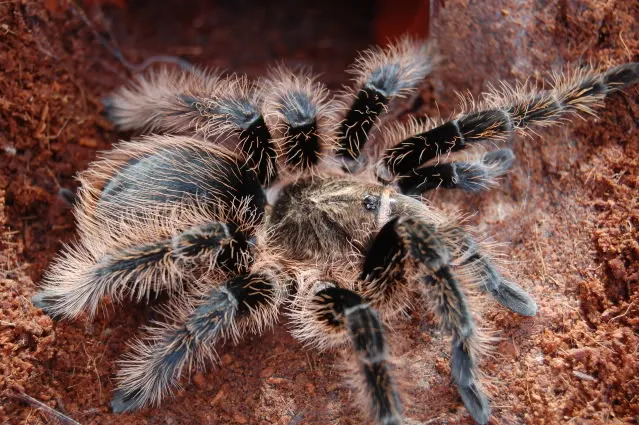
One of the most unique defense mechanisms of the Curly Hair Tarantula (and many other New World tarantulas) is the use of urticating hairs, also known as “kicking hairs.” These specialized hairs are a crucial part of their defense strategy against potential threats. Understanding how these hairs work, how they are deployed, and the potential risks involved is important for any tarantula owner. These hairs are a fascinating adaptation, perfectly suited to protect the tarantula in its natural environment. The tarantula uses these hairs in a very specific way, demonstrating a surprising level of sophistication in its defense mechanisms. Knowing about this defense system is critical for handling and caring for these animals.
Understanding Urticating Hairs
Urticating hairs are fine, barbed hairs located on the abdomen of the Curly Hair Tarantula. Unlike the fangs, which are used for hunting and injecting venom, these hairs serve a purely defensive function. The hairs are designed to irritate and deter potential predators. They are not venomous but act as a physical irritant. The shape and structure of the hairs are critical to their effectiveness; the barbs cause the hairs to become embedded in the skin or eyes of a threat, causing intense itching and discomfort. This defense mechanism is particularly effective against mammals, who are highly sensitive to the hairs, and is a key factor in the tarantula’s survival.
How They Are Used
When threatened, the Curly Hair Tarantula uses its hind legs to flick these urticating hairs toward the perceived danger. This action is often referred to as “kicking” the hairs, hence the term “kicking hairs.” The tarantula will rub its abdomen with its hind legs, dislodging the hairs and launching them towards the threat. The hairs can be dispersed in a cloud, increasing the chances of making contact. The effectiveness of this defense mechanism is a testament to the tarantula’s ability to adapt and survive. Understanding how and when a tarantula might deploy its hairs helps owners handle them safely and avoid triggering this defense mechanism. It’s important to note that while the hairs can cause discomfort, they are not typically life-threatening to humans, but can be very irritating.
Curly Hair Tarantula Behavior
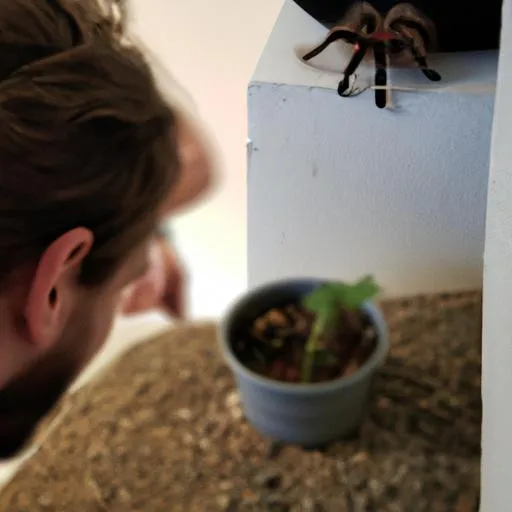
The behavior of the Curly Hair Tarantula is generally docile, contributing to its popularity as a pet. Understanding their behavior is crucial for providing proper care and ensuring the tarantula’s well-being in captivity. From their temperament and handling characteristics to their feeding and burrowing habits, observing their behavior gives important insights into their needs and preferences. Being able to read a tarantula’s behavior can also help owners anticipate potential issues and make informed decisions about their care.
Temperament and Handling
Curly Hair Tarantulas are known for being relatively docile, which makes them a good choice for beginner tarantula keepers. However, it is still important to handle them with caution. They are not generally aggressive, but they can become defensive if they feel threatened. The best practice is to avoid handling them unless absolutely necessary, such as for a health check or to move them. If you do handle them, do so gently and slowly, and always be aware of their potential defensive behaviors, such as raising their front legs or flicking their urticating hairs. Frequent handling can also stress the tarantula. Careful observation of their behavior can help owners determine how comfortable they are with being handled.
Diet and Feeding Habits
Feeding is a fundamental aspect of caring for a Curly Hair Tarantula. Their diet and feeding habits are relatively straightforward, making them easy to manage in captivity. Providing the right type and amount of food is essential for the tarantula’s health, growth, and overall well-being. Understanding their dietary needs and feeding preferences will ensure that they receive the necessary nutrients to thrive. Regular monitoring of the tarantula’s feeding habits can also provide valuable insights into its health and any potential issues that may need attention.
What Do Curly Hair Tarantulas Eat?

In the wild, Curly Hair Tarantulas are opportunistic predators, feeding on insects, small invertebrates, and occasionally small vertebrates. In captivity, they primarily eat insects like crickets, mealworms, and roaches. The type and size of the insects should be appropriate for the tarantula’s size; smaller tarantulas should be given smaller prey, while larger individuals can handle larger insects. It’s important to ensure the insects are gut-loaded (fed nutritious food) before offering them to the tarantula. This enhances the nutritional value of the meal and benefits the tarantula. Offering a varied diet can also improve the tarantula’s health.
Feeding Frequency
The feeding frequency for Curly Hair Tarantulas varies based on their age and size. Spiderlings (young tarantulas) should be fed more frequently, typically every 2–3 days, while adult tarantulas can be fed every 1–2 weeks. It is best to offer the tarantula prey and remove any uneaten food within 24 hours. Overfeeding can lead to obesity, which can negatively impact the tarantula’s health, and underfeeding can cause slow growth and other health problems. Monitoring the tarantula’s abdomen size is a good indicator of its feeding needs. A well-fed tarantula will have a plump abdomen, while one that is underfed will have a thinner abdomen.
Caring for a Curly Hair Tarantula
Providing the right environment is critical to ensuring the health and happiness of a Curly Hair Tarantula in captivity. Their needs are relatively straightforward, making them a popular choice for both novice and experienced tarantula keepers. Creating a suitable habitat that mimics their natural environment involves specific considerations regarding enclosure setup, humidity, and temperature. Careful attention to these factors will provide the best possible living conditions for your tarantula.
Enclosure Setup
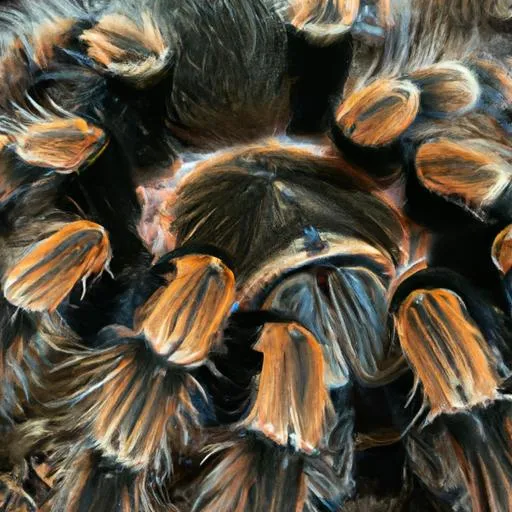
A suitable enclosure is essential for the well-being of a Curly Hair Tarantula. The enclosure should be large enough for the tarantula to move around comfortably, with dimensions that are approximately 2–3 times the tarantula’s leg span in length and width, and at least the same height as the tarantula’s leg span. A secure lid is crucial to prevent escape. The enclosure should be well-ventilated to prevent the buildup of mold and bacteria. The substrate should be deep enough for the tarantula to burrow; a mixture of coconut fiber, peat moss, and vermiculite is a good choice. Providing a hide, such as a piece of cork bark or a half-log, is essential as it provides the tarantula with a secure place to retreat and feel safe. The enclosure setup plays a significant role in the overall well-being of the tarantula.
Humidity and Temperature
Maintaining appropriate humidity and temperature levels is vital for the health of a Curly Hair Tarantula. Humidity levels should be maintained between 60–70%. This can be achieved by misting the enclosure with water every few days or by providing a water dish. Temperature should be kept between 75–85°F (24–29°C), which replicates their natural habitat. Using a heat mat on the side of the enclosure can help maintain this temperature, but make sure the heat source doesn’t dry out the substrate too quickly. A thermometer and hygrometer should be used to monitor both the temperature and humidity levels. Adjusting these environmental factors based on the tarantula’s specific needs and behaviors will help ensure it thrives.
Lifespan and Growth
Understanding the lifespan and growth stages of a Curly Hair Tarantula is important for proper care and expectations. These tarantulas have a relatively long lifespan compared to many other invertebrates, with females living significantly longer than males. The growth process is also a key factor in their care, as tarantulas shed their exoskeletons in a process called molting. Knowing what to expect during each life stage allows owners to provide the appropriate environment and care.
Lifespan
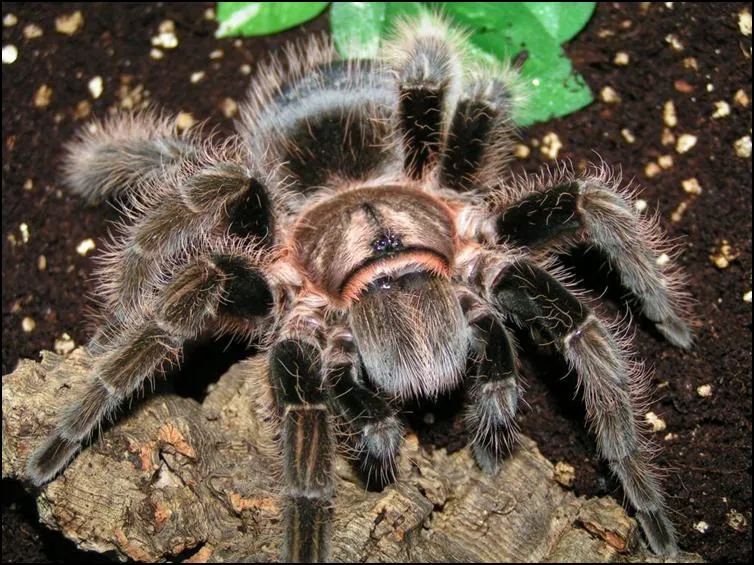
The lifespan of a Curly Hair Tarantula varies greatly based on sex. Females can live for 10–15 years or even longer under optimal conditions. Males, on the other hand, typically have a much shorter lifespan, often only living for 2–5 years after reaching maturity. The shorter lifespan of males is partly due to the stresses of mating and their smaller size. Providing appropriate care, including a suitable habitat, proper nutrition, and a stress-free environment, will help to extend the lifespan of your tarantula.
Growth Stages
Curly Hair Tarantulas grow through a process called molting, where they shed their exoskeleton to accommodate their growing bodies. During molting, the tarantula will typically cease eating and may become lethargic. The process can take several hours or even days. It’s important not to disturb the tarantula during this time. After molting, the tarantula will be vulnerable for a few days, as its new exoskeleton needs time to harden. Feeding should be avoided during this period. The frequency of molting decreases as the tarantula matures, with spiderlings molting more often than adults. The molting process is a significant indicator of the tarantula’s health and growth progress.
Curly Hair Tarantula Health Issues
While Curly Hair Tarantulas are generally hardy, they are still susceptible to certain health issues. Recognizing common problems and knowing how to prevent and address them is critical for maintaining their health. Proper care, including appropriate environmental conditions, nutrition, and hygiene, is essential for preventing many of these problems. Regular observation and prompt action are also vital for identifying and treating any health issues that may arise. Careful attention to their environment and behavior can go a long way in ensuring they live a long and healthy life.
Common Health Problems
Some common health problems include dehydration, mites, and injuries from falls or improper handling. Dehydration can occur if the humidity is too low. Mites can infest the tarantula’s body and enclosure, causing irritation and potentially spreading diseases. Injuries can occur if the tarantula falls from a height or is handled roughly. If the tarantula is losing limbs, it can be a sign of a serious problem. Providing a water dish, maintaining appropriate humidity levels, and ensuring a clean enclosure can help prevent these issues. Regular observation can help detect problems early so they can be addressed promptly.
Preventive Care
Preventive care is the best approach to maintaining the health of your Curly Hair Tarantula. Ensuring proper environmental conditions, including appropriate humidity and temperature, will greatly reduce the risk of health problems. Providing a varied diet of gut-loaded insects and avoiding overfeeding are essential for preventing obesity and other nutritional deficiencies. Regular cleaning of the enclosure and removal of uneaten food will help prevent mite infestations and other hygiene-related issues. Regular observation is also crucial. Watch for any changes in behavior, such as lethargy or loss of appetite, which could indicate an underlying health problem. Prompt veterinary care is also recommended if you notice any serious health concerns.
